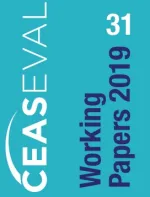Borders and the mobility of migrants in Spain

CEASEVAL Working papers No.31
In the last two years Spain has become a relevant case to study international protection given the high volume of applications and variety of nationalities applying for international protection. Spain is a natural, physical and historical frontier with two continents, Africa and Latin America, provoking diverse and changing migratory flows. As a result, this challenge has as a main consequence that the international protection system -with regard to the entry of applicants, the process of asylum granting or the access to accommodation and integration programs- is continuously and rapidly changing. The aninability to absorb the current level of asylum requests is causing migrants to face a variety of borders, broadly understood, making it difficult or impossible to enjoy international protection. This report analyses the situation in Spain through in-depth interviews with stakeholders and asylumseekers, review of documents and ethnographic observation. The main finding is that in Spain, the border must be understood very broadly. Migrants face frontiers that act very differently at all times and limit their ability to move both physically and socio-economically. The expansive and multifaceted condition of the Spanish border is causing a negative effect on the recognition of the international protection statute itself, as well as on integration.
Keywords: Spain, EU, Asylum-seeker, Asylum system, Border(s), Airport, Mediterranean Sea